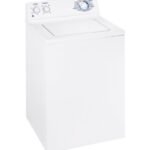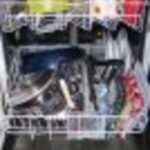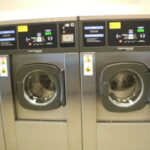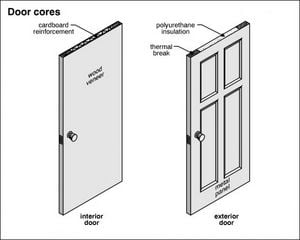Front-loaders are the new energy-efficient choice for smart shoppers. Shop at a store that sells multiple brands of washers and try to find an unbiased salesperson. From the size of your family and how many loads of wash you do per week, the salesperson should be able to recommend two or three models, without pressing you towards a particular one that he/she earns a commission for.
A truly unbiased source is the popular consumer’s magazine, Consumer Reports. Although commercial advertisers may not use CR to back them, consumers are quite welcome to benefit from the information. Compare before you buy.
Most appliances are warranted by their manufacturers for the first year or two, and most serious problems occur during that time. Thus, paying for an extended warranty is rarely worthwhile, according to CR, although salespeople will tell you differently. Again, use an unbiased source.
It took me a while to get used to switching from a top-loader to a front-loader, but I knew it was the energy-efficient choice. The front loader treats my clothes gently and cleans them thoroughly, and spins the clothing until it’s almost dry, which saves water and electricity.
For some objective comparisons between top-loaders and front-loaders, the February 2008 CR points out important differences.
Top-loaders
Top-load washers are easier to load. Obviously, if you are of normal height, dropping clothing into a basket rather than leaning forward or sideways is easier.
Top-loaders are cheaper, initially, to purchase, but top loaders require up to 40 or 50 gallons of water per load. Front-loaders require 10.5 (Bosch) to 15 gallons per load.
Top-loaders usually have shorter cycles. They average about 45 to 60 minutes per load; front-loaders run about 65 to 105 minutes.
Top-loaders don’t vibrate as much on the spin-out cycles. That can be important depending on the type of floor and location of your machine.
Energy standards were raised as of January 1, 2007. As things became standardized among manufacturers, comparisons were easier to make. It is now easier to choose a better, more-efficient machine among several brand choices.
Watch for the blue and white Energy Star labels for efficiency ratings, and the yellow Energy Guide tags for the annual energy costs for specific machines.
Front-loaders
Front-loaders are gentler on clothing. With the rolling drum action, instead of harsher agitators, clothes are treated more kindly and will show less wear. You can also buy a pedestal to place under the machine to add height.
Good front-loaders cost more compared to top-loaders. Front-loaders retail for $650 to $1900. Top-loaders run about $480 to $1000. Owners usually keep their machines for about 10 to 13 years. Thus, a high-efficiency model could end up costing less than a standard model over its lifetime.
Some other factors to consider before choosing a washer: noise, vibration, and features.
The noise factor. Top loaders are rather noisy. Front-loaders are quieter during the wash cycle, but the spin out, up to 1000 rpm, can produce an annoying, high-pitched sound that could bother you if it’s near your bedroom or the baby’s room.
Front-loaders also vibrate at those high speeds and should be on a solid floor, like concrete. Extended spin cycles did not improve water extraction by much. Some of the newer units are deeper than older styles so make sure you have room for it.
Washers offer automatic temperature control for different kinds of clothing. Some offer a “sanitizing cycle” that can kill dust mites. Some offer steam settings that are supposed to handle stains better, but they cost more and are not more effective than lower priced machines.
Automatic dispensers for detergent, bleach, and softeners add to overall convenience.
Washers should have an end-of-cycle button that can be turned off. If they sound off every 5 minutes until you remove the clothing and you’re in bed, this can be quite annoying.
Washers that are more efficient remove more water during the spin out, thus lessening dryer time. Higher capacity means fewer loads, if you can fill them. Obviously, if you live alone, you do not want a large capacity machine. Shorter cycles mean the ability to do more loads in one day.
Some people complain about mold or mildew forming inside the door of a front-loader. The gaskets are being improved, but if you leave the door open slightly, you can avoid most problems. Alternatively, wipe out the inside gasket with a cloth after each use. A newly cited problem with front loaders is that people use too much detergent; they have created a new product to run through front-loaders to dispel the smell, but practice using less than the recommended amount of HE detergent.
General brand comparisons – Features and Prices
A top-rated front-loader, a Fridgidaire, costs about $650, and is rated a “Best Buy” in the February 2008 “Consumer Reports” magazine. Comparing 42 washers, the top choices include a couple LG and Sears’ Kenmore brands, a Whirlpool and a Miele.
Top-rated top-loaders include a Maytag for $950 and a Whirlpool for $1000. Ranked 6th is a GE for $480, also rated a “Best Buy.”
Use proper detergent
Of course, using the proper detergent is very important. Manufacturers recommend using HE (high efficiency) detergents, which cause less sudsing in the front-loaders. The January 2007 Consumer Reports rates SA8, Gain, and Tide tops in HE detergents. For conventional detergents, CR rates Tide, Wal-Mart’s Great Value, and Wisk the best.
CR gives ranks for washing machines based on washing performance, energy efficiency, water efficiency, capacity, gentleness, noise and cycle times. It lists specific models and retail costs. It also gives brand repair histories for washers. You can subscribe to CR magazine for $26 a year or find a copy in your local library.
Some retail stores, like www.Lowes.com, offer on-line consumer ratings of their products from customers who purchased from them. These are sometimes more up-to-date for specific, recent models not yet rated by Consumer Reports.
Sources:
Consumer Reports, “Laundry Detergents,” January 2007, published by Consumers Union, Yonkers NY.
Consumer Reports, “Washing Machines,” February 2008, published by Consumers Union, Yonkers, NY.
Www.Lowes.com offer online consumer ratings from customers who purchased products from them.





